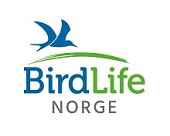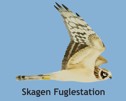
|
|
Gulsanger (Hippolais icterina) Gulsanger - en art på framgang i Norge. New report from Jomfruland and Lista
By M. Wold The newest report contains a summary of bird migration at the two sites during 2012, but also an update on long-term trends for a few selected species since the 80s and 90s until today - both with regards to population changes and changes in migration timing. Monitoring of migrating birds via mist netting is a good supplement to other programmes, because it uses other methods than what is normally used for e.g. monitoring of birds at their breeding/wintering sites. Furthermore, migration counts, in some places conducted over more than 30 years, constitute a uniqe documentation of how bird migration responds to climate and environmental changes. The time series collected at the bird observatories over the years represent a legacy for the future, and with every year of added data, its value increases. Here we present a small excerpt from the 2012 report concerning long-term changes as revealed by mist netting numbers for a few selected species. A full version of the report can also be downloaded: NOF rapport 2-2014 (in Norwegian). Migrants from the tropics: Icterine warbler, wheatear and pied flycatcher One of the species showing an increasing population trend in Norway on a long-term basis is the tropic migrant icterine warbler (hippolais icterina). The year 2012 was an unusually good year for this bird, and the spring campaign at Jomfruland and Lista saw a large increase of 125% and 232%, well above the expected year-to-year variation (30-80%) for this species. The numbers from spring campaigns at Jomfruland show a clear, positive long-term trend (see Fig. 1), and given that there is co-variation between Lista and Jomfruland for this species, it points to a general increase in the icterine warbler population in Norway, with changes being especially well recorded at Jomfruland. Two other tropic migrants that are not doing so well on a long-term basis are wheatear (oenanthe oenanthe) and pied flycatcher (ficedula hypoleuca). During 2012 both appeared to continue on a negative trend that has been going on for some time. Fewer than normal wheatears were caught at Lista during autumn season compared to what is normal, the decline was about 60%, which is large compared to an expected variation of 36%. There is a population of breeding wheatears around the Lista Lighthouse area, and the mist netting numbers from Lista therefore contains a mixture of local and migrating wheatears. The long-term trend for autumn campaigns at Lista is negative and statistically significant, see Fig. 2. The numbers of pied flycatchers during spring campaign at Lista decreased by 77% in 2012, which is a larger change than the year-to-year variation of 56%. The numbers from Jomfruland were also decreasing, and in general the monitoring series show a negative long-term trend. If the decreasing trend for this species continues, we expect that in a few years the long-term correlation will become statistically more significant (as of today the significance level is p=0.05 which is on the limit of what is taken as statistically significant). Europe migrants: Goldcrest and wren Migrants wintering in Europe like goldcrest (regulus regulus) and wren (troglodytes troglodytes) saw an increase in 2012 after a period with very low numbers, especially after the hard winters in 2009/10 and 2010/11. But even though we saw an increase from 2011 to 2012, the results for 2012 still lie well below the long-term average, and 2011 was one of the worst years for wren throughout the whole monitoring period. Goldcrest and wren are species that feed on insects and spiders, and a shortage of food combined with their need for a large energy supply make them especially sensitive to winter temperatures. Populations of these species therefore easily take a hit during years with cold winters. The mild winter 2011/12 have thus had a positive effect and given these two an upturn. Blue tit invasion Autumn 2012 was characterized by invasion-like movements of blue tits (cyanistes caerulus) - the third year in a row and large numbers of blue tits were moving all over Scandinavia. Blue tit is thus the most numerous species in the mist netting autumn campaigns at Lista, with 2236 birds from 2011 and 1736 from 2012. Autumn 2012 was the third season in a row with a large number of blue tits, quite unusual compared to the rest of the monitoring period, see Fig. 3. The mild winter 2011/12 must have led to high survival for this species, followed by high breeding numbers in the spring. Also other bird observatories reported on invasion-like movements of blue tits this autumn, and at Falsterbo a record number of 284 450 blue tits were recorded in the field. A highly unusual control of a Lista-ringed blue tit was made this autumn. Most of our blue tit controls are made in Rogaland and Hordaland counties, but this year one individual was controlled in Shetland. This is highly unusual, as foreign controls of Lista-ringed blue tits normally stretch as far as Denmark. Occurrences of blue tits on Shetland is also highly unusual. Observations of migrating blue tits at Lista show that flocks flying out to sea usually return quickly as the risks of continuing are too high. This particular individual must have lost its course, and thereafter not been able to return because of easterly winds. Falsterbo bird observatory reported this autumn on unusual behaviour of blue tits flying upwind out to sea, probably driven by shortage of food (Kjellén 2012). Link to the report (in Norwegian) References: Kjellén N., 2012, Sträckfågelräkningar vid Falsterbo hösten 2012. Meddelande nr. 274, Falsterbo Fågelstation. Wold M., Røer J.E., Kristiansen V., Nordsteinen O., Øien I.J., Aarvak T., 2014, Bestandsovervåking ved Jomfruland- og Lista fuglestasjoner. NOF rapport 2-2014. | ||||||||

| Ringing numbers | ||||||||||
|
| Reportasje fra Lista FS i Aftenposten |

|
| Seasonal deviation | ||||||||||||||||||||||||||||||
|
|
Følg Følg Lista FS på facebook.com |
| Siste 5 på siden |
|
Begynnerkurs i ringmerking: 17.-18. august The annual report for 2023 is available! Fuglefestival 2.-3. september Report from spring 2023 Ny rapport: Måling av elektromagnetiske feltstyrke fra fugleradar ved Lista fyr. |
| Nyheter fra NOF |
|
Bra besøk i Fugleteltet på... Ankerfjella IBA trues av... Kraftlinjer og vindmøller... Lille måltrost og den enda... Fine hekkeflåter til ternene... Statsforvalteren sier nei til... Hotell i særklasse Tusenvis av svarttrost: Hvor... |
Lista Fuglestasjon
Fyrveien 6
NO-4563 Borhaug
post@listafuglestasjon.no Tlf: 949 86 793
 |  |


 Only in English
Only in English



